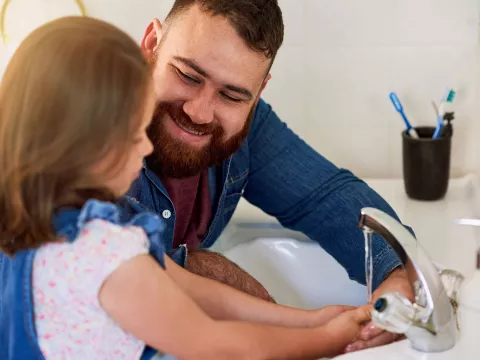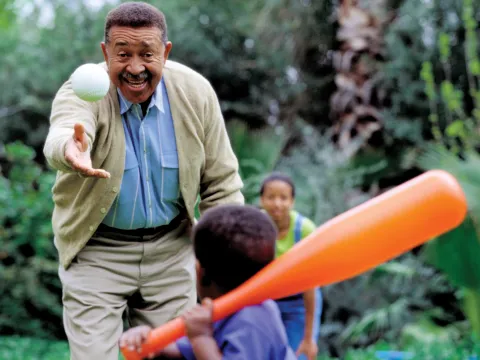- AdventHealth

Lead is invisible and has no smell or taste. It’s found in dozens of places, from household sources like old paint and pipes to products like tea kettles and imported toys.
At the same time, lead is a neurotoxin that is especially damaging to a child’s growing brain. Lead exposure can harm a child’s ability to pay attention, cause trouble at school and even lower their IQ.
So how do you keep your kids safe, especially one who is always putting things in their mouth?
You need to know what products might contain lead and be vigilant about keeping them away from your child. It also helps to know whether your drinking water is safe.
A Once and Future Threat
It is only in modern times that scientists have recognized the danger of lead to human health. The origin of the word “plumbing” — it’s from the Latin word for lead, “plumbum” — is a sign of how long we’ve been bringing this poison into our homes.
It also took decades for public health advocates to get lead removed from vehicle gasoline, a change that caused average lead levels to plummet.
But lead remains in our environment, partly from old gas, paint and other legacy sources.
Kids don’t have to eat lead paint to be poisoned by it. According to the Centers for Disease Control and Prevention, exposure is more common when lead gets ground up into tiny bits and contaminates house dust or soil. Common locations for this type of lead include windows, door frames and stairs, railings and porches.
Especially if your house or apartment was built before 1978, it’s important to get your paint tested for lead.
Lead was commonly used in consumer products because it’s cheap and easy to shape, and it remains used for those reasons in countries without stringent health standards.
Lead can be found in imported candies, toys, toy jewelry and cosmetics.
And, of course, it can still be found in water.
Is Your Water Safe?
The drinking water crisis in Flint, Michigan, has focused attention on this issue. The problem started when the city, in 2014, began drawing water from the Flint River instead of getting water from nearby Detroit.
This new river water didn’t itself contain lead, but it was slightly more acidic. This meant that it ate away at the inside of Flint’s old pipes until it reached bare lead. The toxin started leaching into drinking water and, with tragic results, into the bodies of Flint’s children.
The scale of Flint’s crisis was shocking, but it isn’t the only place that deals with lead.
According to the CDC, about half a million U.S. children ages 1 through 5 have blood lead levels above 5 micrograms per deciliter. This isn’t a “safe” level — there is no “safe” level of lead — but rather the level the CDC believes should trigger a public health response.
The only way to know that your tap water is safe to drink is to have it tested. You can check it yourself by buying a lead testing kit.
This helps you collect samples and send them to a lab for review. You can also have your water tested for you. In some areas, the service may be free. Call the Environmental Protection Agency’s Safe Drinking Water Hotline at Call800-426-4791 to learn more.
It’s also important to note that while it kills harmful bacteria, boiling water does not get rid of lead.
Other Steps You Can Take
The Environmental Protection Agency also recommends parents take a series of steps to lower their kids’ lead exposure:
- Teach kids to wash their hands and wipe and remove their shoes after playing outside
- Wash their hands, bottles, pacifiers and toys often.
- Use cold water to prepare food and drinks (hot water can cause lead to seep out of pipes more quickly than cold water)
- Keep your home as free of dust and clean as you can
- Clean around painted areas where dust can gather, like doors and windows.
Lead poisoning can affect every part of a child’s health: the physical, mental and emotional. We want to be your partner in keeping your children safe and happy, including at home, school and your community.
If you have any concerns about your child’s exposure to lead, it’s important to discuss them with your child’s pediatrician.
To learn more about how we bring health and peace of mind to families, visit our website.




